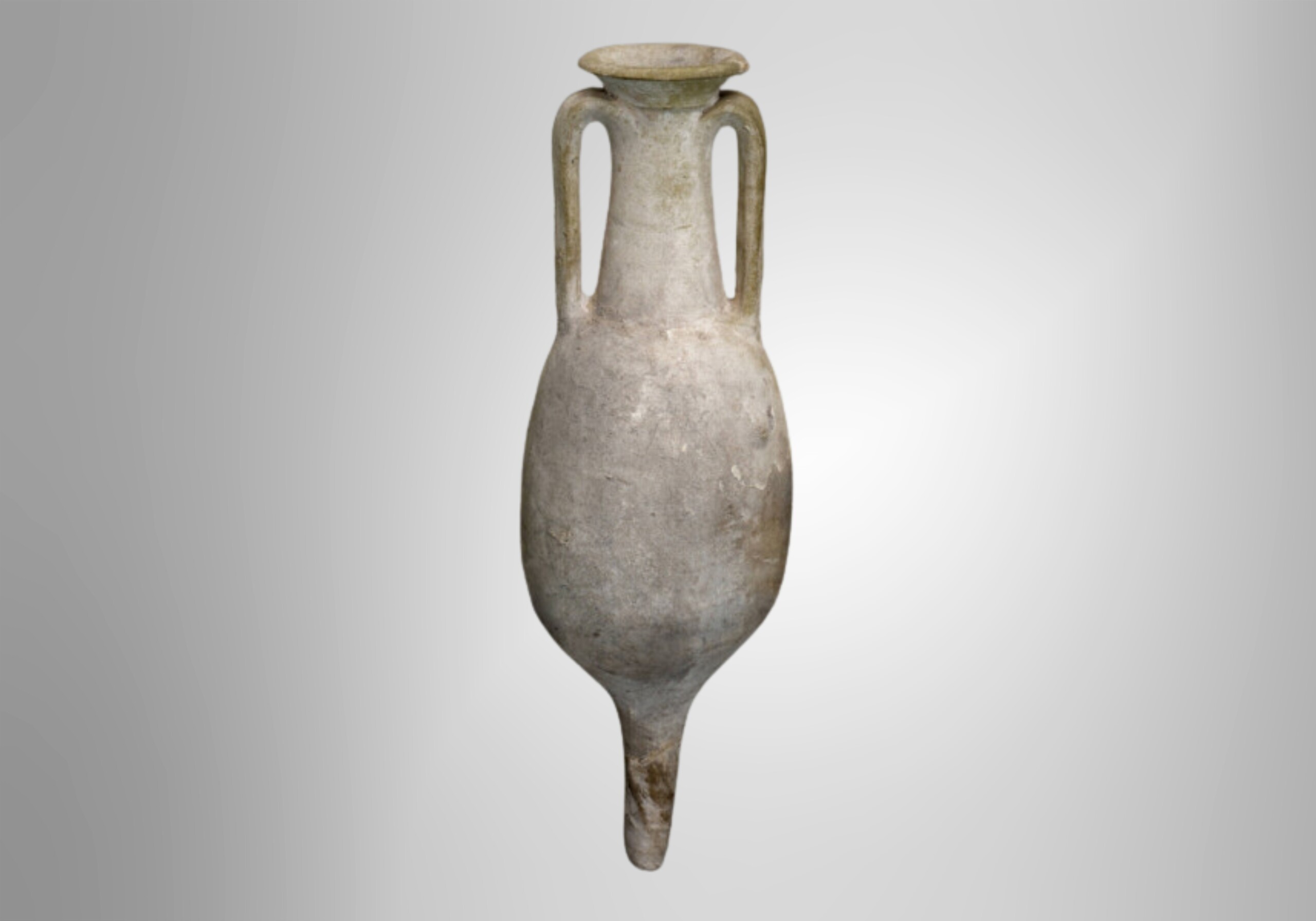
in English original
This object has been translated into 9 different languages by 8 different users
This Roman amphora is almost 2000 years old. It was originally found in Cadiz in Spain, and was brought back to the museum as a complete example of this type of storage vessel. The pointed shape of the bottom was so that they would lie against each other securely when stacked. It is useful to compare it to broken pieces found in excavations in Manchester – as these were made of clay, it was easy to use and dispose of them.
What things do you use and throw away, and which things do you use again and again?
Do you have something you’d like to say, in your own language or English, about the object or translation? We’d like to hear what you think.
Translations are community-sourced and for anyone to participate in, however you use your language. For more information, see Community Guidelines.
27 Jun, 2023
Notes on culture
In Rome, there is a port on the river Tiber called Emporio. This port has been used since ancient Roman times and it was particularly useful to receive goods and materials that arrived by sea from the port of Ostia and sailed up the Tiber.
Over the centuries the amphora shards, which were used to hold grain and liquid foodstuffs during transport, accumulated in a mound. This mound became so substantial in size to be awarded the name “Monte dei cocci” (“Mound of shards”).
Today, this mound is commonly known as Monte Testaccio. It is surprising for tourists and Romans to know that the famous Testaccio in fact an artificial hill formed by shards and various debris.
Nowadays, Testaccio is one of the most popular neighbourhoods in Rome. It is one of the cultural centres of the Eternal city but, throughout the centuries, it always managed to maintain its genuine and familiar spirit as Rome’s working-class district.
20 Nov, 2025
I would like to visit Testaccio to buy pizza Ebraica from a famous kosher cake shop called Boccione.